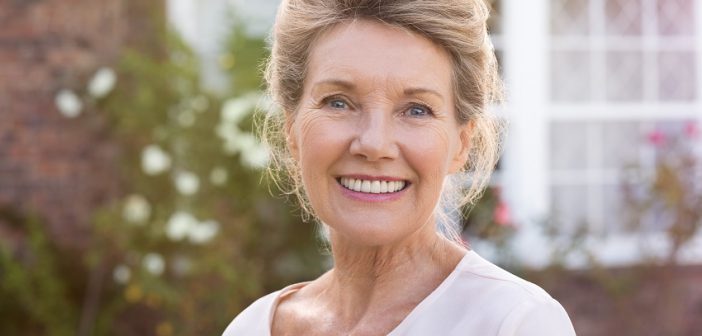As we age, it’s easy to focus on what is going wrong rather than how we can age well. But you really can make the second half of your life better than the first. One part of making your aging successful is keeping your muscles and bones strong and maintaining a healthy figure.
Women in peri and menopause often notice fat accumulating around their waistline and even deeper inside their abdominal organs, which is called visceral fat. Some call this burgeoning belly ‘Menobelly.’ Worrying about a widening waistline isn’t just a question of appearance; it’s also a good indicator that fat is building up around your internal organs, which could adversely impact your health.
Maintaining a healthy shape after 45 can be quite challenging for women as their hormones change with menopause but some of the challenges can be reduced with proper diet, hormone balance, and exercise. The average US woman reaches menopause at 51, but she’s likely been in perimenopause for 7-10 years already by then. So, don’t wait until you are in postmenopause to get help. This article will cover ways for you to keep that youthful figure for vanity and health 🙂
Menopause – What is It?
Perimenopause is when your hormones progesterone, estrogen, and testosterone start to drop erratically. Once you have gone one solid year without a period, you are in menopause. After that, you are postmenopausal.
When the hormones estrogen, progesterone, and testosterone drop, you can experience a world of menopause symptoms. One of the most troubling symptoms can be the change in fat deposition and the shape of your body. Once we were able to wear cute belts and pants with zippers, but now that’s become a challenge. It would be easy to give in and state that you’re too old to exercise, but body shape is not all about vanity.
Many women in their 20s and 30s have hourglass figures, and older women tend to have more of an ‘apple’ shape or a thicker waist. When women gain weight around their middle with menopause (the menobelly), they put themselves at increased risk of developing heart disease, Type 2 Diabetes, and some cancers.
Women usually gain weight until age 65, and then begin to lose weight. Weight loss later in life occurs partly because fat replaces lean muscle tissue, and fat weighs less than muscle.
First steps to reverse the aging process
When we can look in the mirror and recognize and accept that our bodies are changing externally and internally, we can start to work to slow and potentially reverse the aging process. Those exercise routines or quick diets that worked so well in your 20s and 30s aren’t’ going to do the trick any longer.
Calories in vs. calories out are always a necessary measure. We also need to think about the metabolic rate and how we might stoke the furnace we call our metabolism to require more calories and deposit less fat. The more calories we need, the more food we can eat without depositing it as fat.
Typically, women over the age of 40 who participate in moderate exercise will need anywhere between 1,600 and 1,700 calories a day. If you go over that amount, you will store those calories as fat. We can change the number of calories we need every day with exercise and activities, and we can also increase our muscle mass to increase the metabolic rate. Here are the details:
I. Exercise for health and happiness. Less exercise is more.
While many of us used extreme exercise methods to keep ourselves particularly trim when we were younger, those types of endurance sports aren’t providing the same kinds of physical benefits as they once did. We suggest you change your mindset to:
- Be kind to yourself. The overexercising frenzy will not get you the look you may desire—moderation and kindness in all things, including exercise.
- Overuse injuries are prevalent for women in their 50s. So, if you still want to run, try running for shorter bursts and add weights to the routine. Maybe jogging stairs or uphill rather than the long miles.
- Lift weights or resistance training. Without a weight lifting program, you can plan on losing about 1 lb of muscle mass per year after the age of 35. That doesn’t mean you will lose weight; the weight will be stored as fat instead of muscle. Not only is that unhealthy, but it also decreases your metabolic rate because fat does not stoke that furnace that regulates your caloric needs. You can store a load of fat on your body, and it requires no calories to hang around.On the other hand, muscle constantly is twitching – even in your sleep – so it continually charges that furnace and keeps your metabolic rate high. More muscle means a higher metabolic rate, so lifting a few weights can prevent fat accumulation, and building muscle mass helps to maintain a good body shape.
- Walk Often. Many of us used to run for fitness but can no longer participate. While we can’t run, we can walk! Walking at least 30 minutes a day, five days a week is the sweet spot. Errands that you can walk to can be a great double bonus. Power walking or walking uphill is a great form of exercise because it’s low impact, easy on the joints, and has a low risk of injury. It has been proven to decrease the risk of heart disease, lower blood pressure, boost your immune system, and reduce arthritis pain.
- Working out four times a week for 45 minutes to help avoid the signs of aging like menobelly, flabby arms, and a flat rear.
- Try to space out how often you hit the gym and exercise on non-consecutive days to help your body recover. Try not to obsess about diet and exercise. Stay active, enjoy yourself.
- Rethink your idea of exercise. There are many different activities that count as exercise. Things like dancing, gardening, and even housework like sweeping, cleaning, and vacuuming count as exercise.
- A fitness monitor can help motivate but not overdo. The more you move, the more energy you’ll have and the more calories you will burn. With a fitness tracker, you won’t have to just run/walk loop after boring loop on the track. It can help you get an idea of your steps when you park further away from the store, take your dog out, or go out on a walk with friends. Women over 50 should aim for 10,000 steps a day.
II. Maintaining a Healthy Weight – Maybe Try Intermittent Fasting: Go ahead, skip breakfast or dinner, but get a minimum of 13 hours of non-calorie time in at least 4 days a week. Some of the common intervals for fasting include 13, 16, 18, and 20 hours. Check out our articles about how to engage in intermittent fasting. Women over 40 have reported that intermittent fasting helps them maintain and lose weight without counting calories or weighing their food. When fasting, women tend to eat healthier throughout the day. Breakfast can quickly turn into brunch, so give it a try!
III. Reduce Osteoporosis with Menopause.
Your bones can affect your body shape as you age. Think of your bones as the hanger or scaffolding for your muscle and fat tissue to drape over. If your bones start to sag, so will your shape.
As your hormones estrogen, progesterone, and testosterone drop with peri and menopause, your bones become more porous and susceptible to osteoporosis. As you lose minerals with osteoporosis, your bones may become less dense. Some bones may even recede as a result – even your teeth can start crowding because the jawline reduces over time.
With decreased bone density, you lose height, affecting the perception of your body shape. While the health of your bones depends on your diet and exercise in your earlier years, you can still do much to prevent the onset of osteoporosis. Include weight-bearing activities to improve bone strength and calcium-rich foods in your diets, such as milk, yogurt, dark leafy greens, cheese, and supplements.
IV. Add in Some Light Weight Lifting
As mentioned above, your muscles help hold everything together, but as you age, you naturally lose muscle mass due to a drop in hormones. As the muscle mass decreases, your skin won’t sit the same ways as it did when you were in your 20s or 30s. Think about the underarm ‘flaps,’ rolls around your belly, or saggy thighs, which can result from the reduction in muscle.
Although some muscle mass loss is natural as you age, you can prevent it with strength-building exercises. These involve pushing or pulling like rowing, Pilates, lifting weights, or using a resistance band.
Cardiovascular exercise is important, but it’s not the only way to stay fit. Strength training can help you look and feel better quickly. Resistance training can also help improve balance, control blood sugar, build bone density, increase your metabolism, and prevent age-related muscle loss.
- Focus on Your Sleep. Most women experience more sleep problems as they age—like insomnia, sleep apnea, and snoring. Getting quality rest is crucial to your health and staying fit. When you get poor sleep, health issues can follow, including obesity, diabetes, and heart disease because your body can’t fight back against disease and illness as well when it’s sleep-deprived.
- Limit the Use of Alcohol and Tobacco. You don’t have to completely give up alcohol but more than one drink a day for women can often be too much. Completely stopping smoking of any kind is highly recommended.
VII. Try HRT to Balance the Dropping Hormones. As you age, your hormone levels drop which leads to major changes in how your body looks and feels. Even men experience this with their testosterone levels dropping. Women’s changes in hormones are more profound than men’s, but HRT can help normalize the levels of estrogen, progesterone, and testosterone not only for maintaining your body shape but also for wellness.
Hormone replacement therapy (HRT) may help reduce the risk of chronic diseases associated with menopause, but there should also be a healthy balance of accepting that your body will change to some degree as you age, but you can stay in good shape by replacing the decreasing hormones, eating well and exercising.
Conclusion
It’s never too late to start focusing on yourself. With age we can accept that working out isn’t just about looking better, it’s about feeling better and being able to maintain your mobility and health for the second half of your life.
While perimenopause is a normal phase of life, there are ways to treat the often-chronic symptoms that result from it. Winona encourages women to try various treatment options whether HRT, diet, or lifestyle changes to identify what works best for them. Perimenopause is a positive beginning, with the opportunity to take preventive action against major health risks associated with the decreasing hormones associated with menopause.
For perimenopause symptoms, estrogen and progesterone therapy are the most effective natural remedy treatment. Hormone replacement is a safe and physiologically natural way for a woman to regain her vitality, and HRT can restore proper hormone levels using substances that are bioidentical to those produced by your own body.
Winona offers our female patients a unique experience. Winona’s healthcare platform is a place to safely connect with a healthcare provider to receive care, to ask the sometimes difficult and maybe even embarrassing questions. If women embrace their evolving bodies by providing the nutrients their body needs they can move through this sometimes precarious phase of menopause with grace and wellness.




